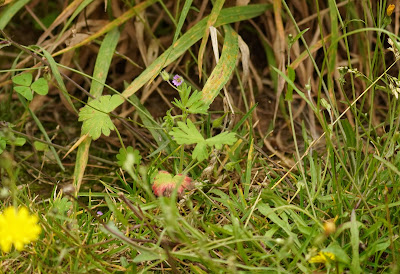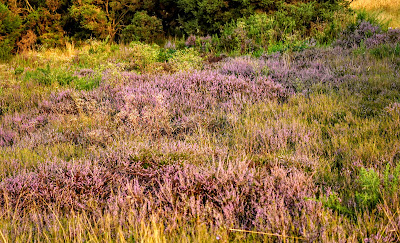Lots of small birds feeding on berries and seeds around the courses at the moment. The wood around the 13th/16th of the Blue course is particularly productive, with Willow Warblers, Goldcrests, Goldfinches, Blue Tits, Coal Tits, Great Tits, Blackcaps, Treecreepers, Nuthatches, Great-spotted Woodpeckers, Spotted Flycatchers, Robins and Wrens all very easy to see.
 |
| Willow Warbler [16th Blue] |
 |
| Goldcrest [16th Blue] |
It is particularly encouraging to see lots of Spotted Flycatchers around the course at the moment. A pair was hunting for flies in the wood and is the third location on the estate that I have seem a family of Flycatchers. It is possible that it is the same birds following me around, but more likely that there are two or three groups of birds.
 |
| Spotted Flycatchers [16th Blue] |
On the reservoir there are a couple of resident families of Tufted Ducks, Coot and Little Grebes with Cormorants and Canada Geese calling in from time to time.
 |
| Little Grebe [Reservoir] |
There are also lots of birds feeding by the 3rd on the Blue. This is a juvenile Goldfinch feeding on a Marsh Thistle. It has the yellow wing bar, but not yet the red face.
 |
| Goldfinch [3rd Blue] |
 |
| Wren [3rd Blue] |







































